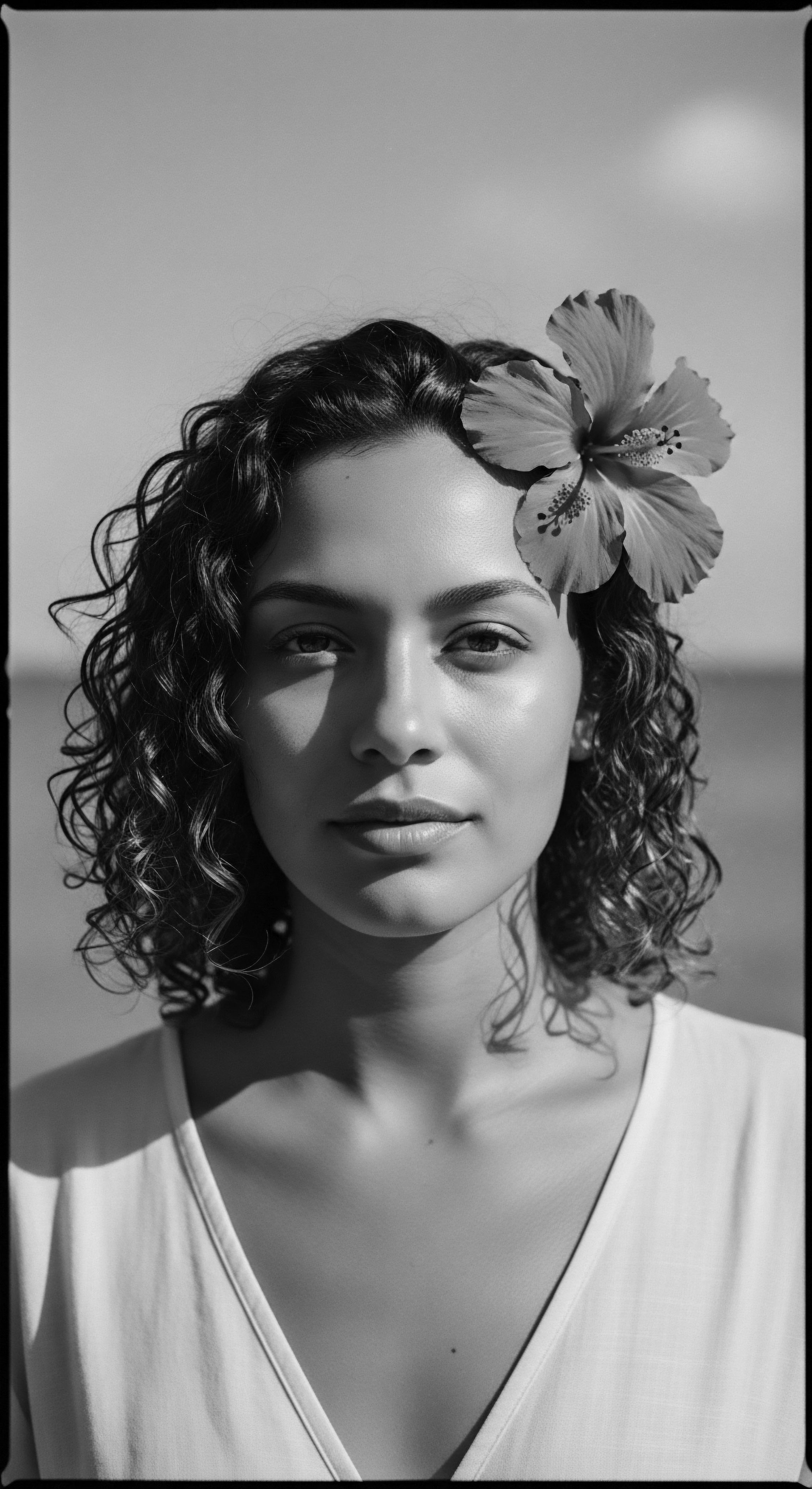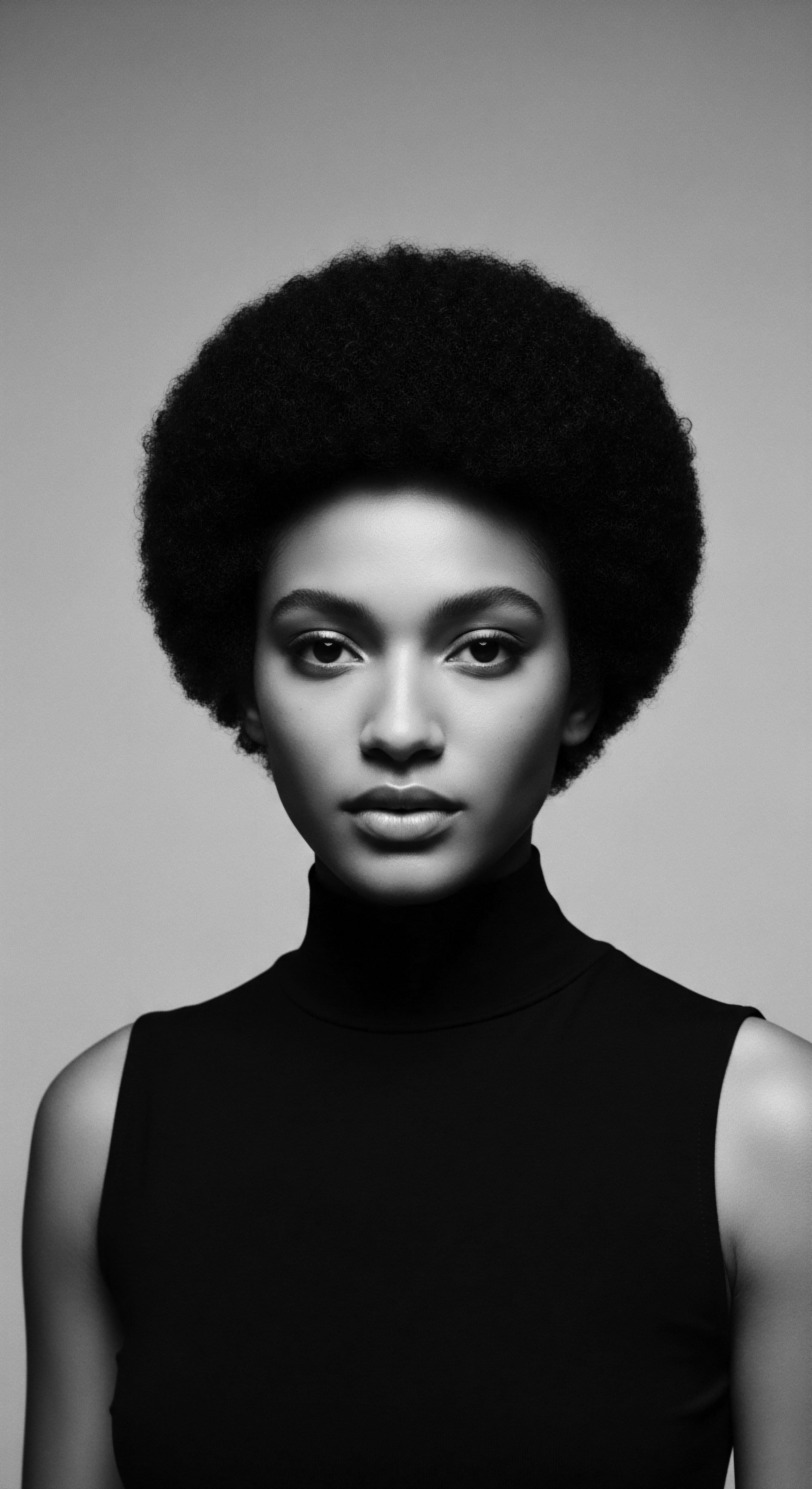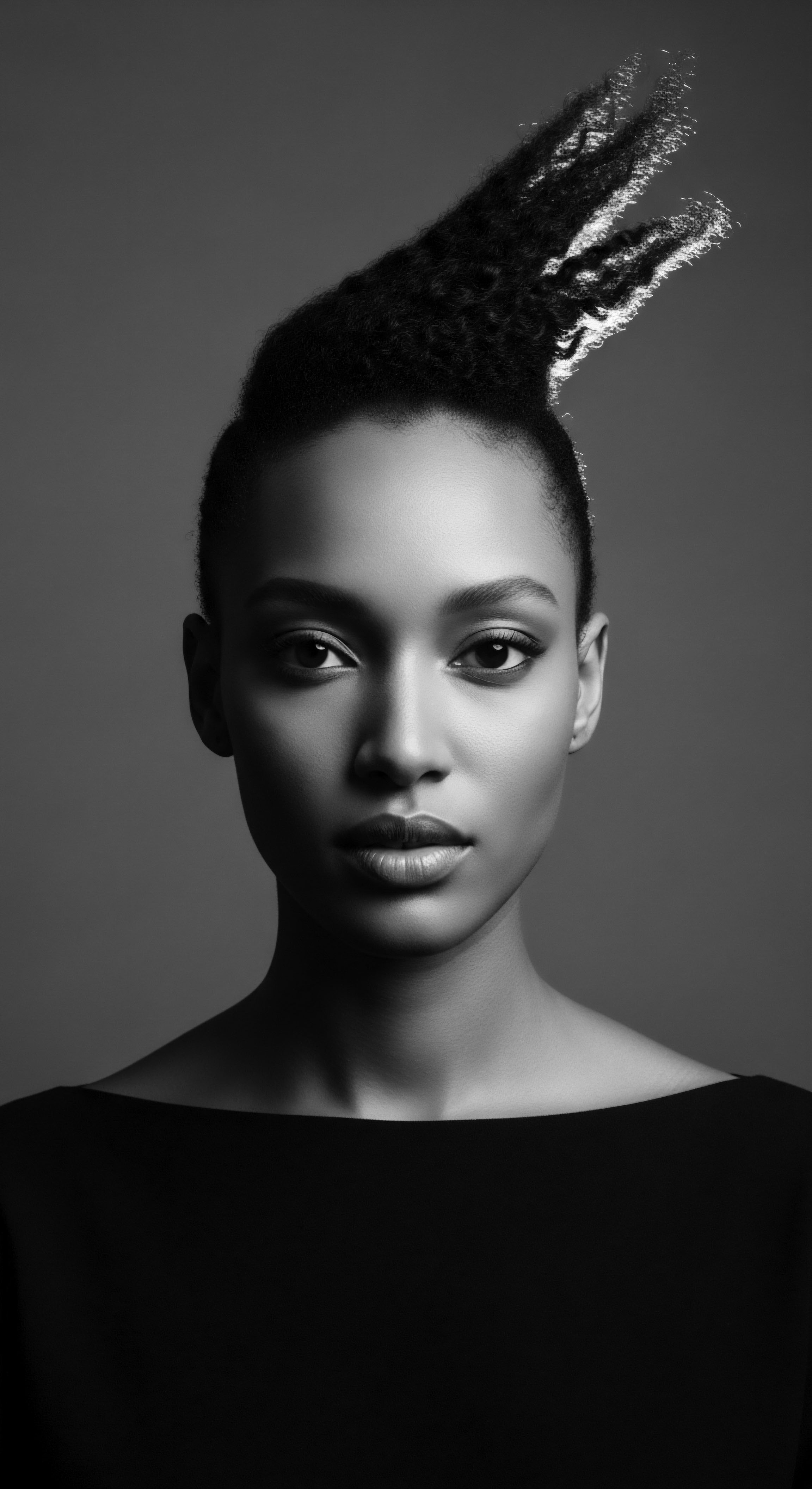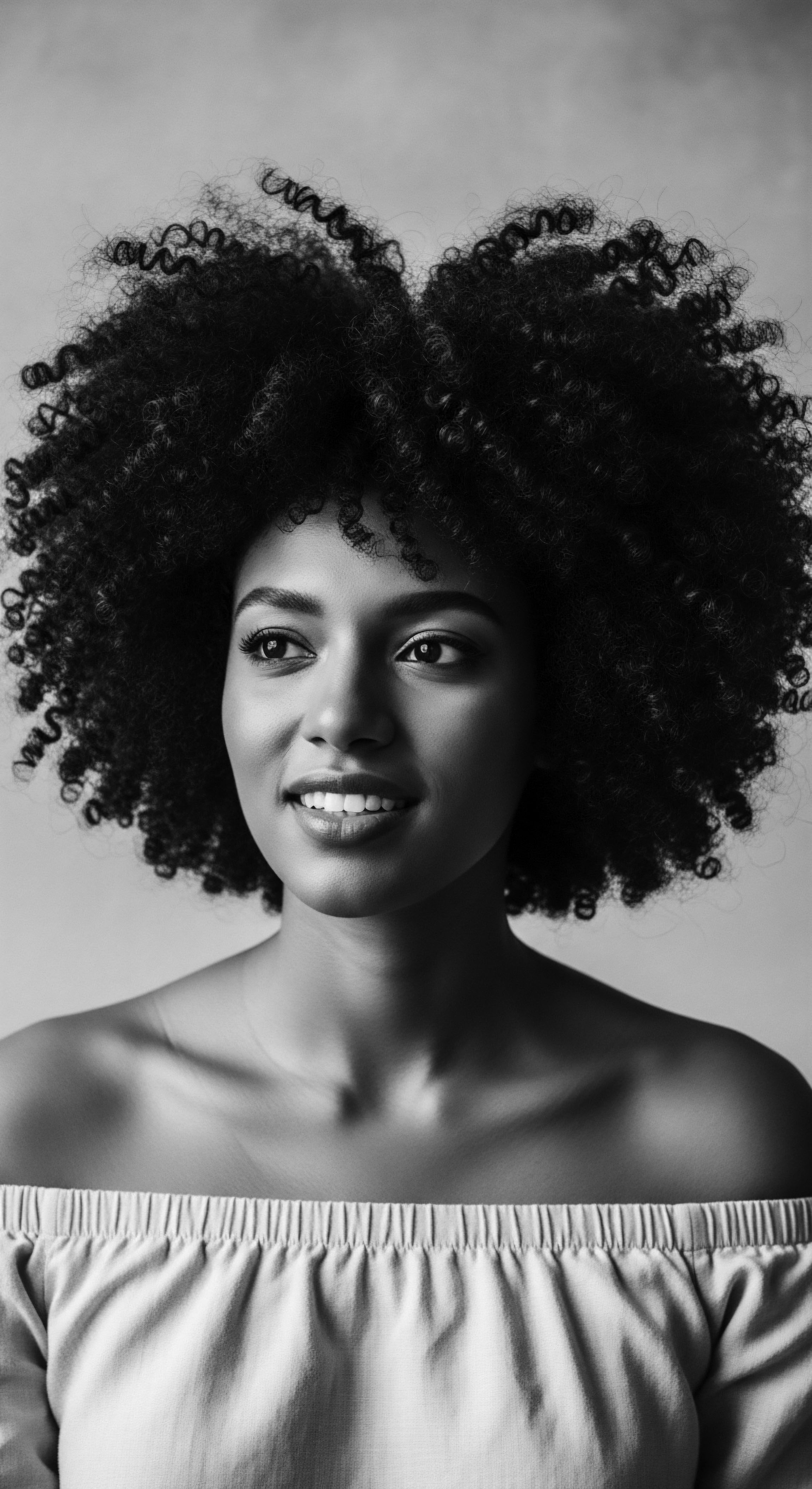
Roots
The whisper of generations, carried on the very currents of time, guides our exploration into the ancestral wisdom of textured hair care. It is a story etched not in parchment, but in the memory of a strand, in the rituals passed from elder to child, across lands and epochs. For those of us with hair that coils, crimps, and curls, the journey into its past is not mere historical inquiry; it is a communion with the very source of our being, a recognition of ingenuity that predates modern science yet often finds its confirmation within it. Ancient oiling practices, a cornerstone of this heritage, formed the earliest language of care for hair that demanded honor, not just maintenance.
To truly comprehend the profound impact of these practices, one must first appreciate the inherent architecture of textured hair itself, a marvel of biological design. Unlike its straighter counterparts, coily and kinky hair types possess an elliptical cross-section, which creates unique curves along the hair shaft. This curvature means that the outer layer, the cuticle, is often lifted at these bends, making it more vulnerable to moisture loss and external stressors. The natural oils produced by the scalp, sebum, struggle to travel down these intricate spirals, often leaving the mid-shaft and ends relatively drier.
This foundational understanding, though articulated in contemporary scientific terms, was an unspoken truth understood by our ancestors. Their solutions, often rooted in botanical wisdom, were precise responses to these biological realities.

Anatomy of Textured Hair and Ancient Insight
The structural peculiarities of textured hair, from its follicular shape to its cuticular arrangement , were not obstacles but rather unique canvases upon which ancient civilizations painted their routines of care. They observed, undoubtedly, the way dry conditions affected the hair, how the sun’s gaze could strip its vitality, and how breakage would plague strands left unattended. These observations, honed over millennia, led to the consistent and deliberate application of oils.
These were not random acts; they were precise, intuitive interventions born from a deep connection to the living world and a profound understanding of the hair’s needs. The very act of oiling was an acknowledgment of the hair’s particular design, an ancestral understanding that its unique structure called for specialized attention and continuous hydration.
Consider, for a moment, the hair shaft’s cuticle ❉ a protective layer of overlapping cells, much like scales on a fish. In textured hair, these scales tend to be more open and numerous, particularly along the curves of the strand, contributing to increased porosity. This inherent porosity, while allowing for rapid absorption of moisture, also allows for its equally rapid escape.
Ancient oiling practices, therefore, functioned as a sealing mechanism, an occlusive layer that helped to smooth these cuticular scales, reduce moisture evaporation, and thereby fortify the hair against environmental challenges. It was an ingenious, early form of what modern science now validates as a barrier function.

Echoes from the Source ❉ Botanical Intelligence
The choice of oils in ancient societies was rarely arbitrary. Communities drew upon their local pharmacopeia, selecting botanical derivatives renowned for their emollient, protective, or even healing properties. From the shea butter of West Africa, prized for its dense, conditioning qualities, to the argan oil of North Africa, a liquid gold believed to restore luster and softness, each oil brought specific benefits.
These selections were a testament to centuries of observation, experimentation, and collective knowledge passed down orally and through practice. It spoke to a keen botanical intelligence, an innate sense of what the earth offered to address the very specific needs of textured hair.
Ancient oiling rituals for textured hair were intuitive responses to its unique biology, sealing moisture and fortifying strands against environmental stresses.
The very concept of hair type classification, though formalized much later, existed in practice through these tailored applications. While modern systems like Andre Walker’s or the various curl pattern charts offer a lexicon for describing hair from 2A to 4C, ancient people understood hair variations through their touch, their feel, and the way it responded to specific plant-based treatments. For tightly coiled hair, which often experiences the greatest dryness due to sebum’s limited travel down the shaft, richer, heavier oils would have been chosen.
For looser curls, lighter oils might have sufficed. This nuanced approach, born of necessity and wisdom, formed the earliest, most effective “classification” system.
The essential lexicon of textured hair, too, finds its origins in these ancient practices. Terms like “locs,” “braids,” and “twists” describe styling techniques that often incorporated the liberal use of oils, not just for hold or sheen, but for the inherent conditioning these protective styles offered. The oil became an integral part of the very definition of these styles, inseparable from their structural and aesthetic integrity. This interweaving of oil and style speaks to a holistic understanding of hair care that saw product, technique, and hair health as one continuous, harmonious process.

Ritual
The application of oils in ancient civilizations was seldom a solitary, purely functional act; it blossomed into a profound ritual, a communal gathering, and a ceremonial practice that wove itself into the social and spiritual fabric of life. These were moments of connection, quiet contemplation, and intentional self-care, often conducted collectively. The careful anointing of hair with rich, fragrant preparations transformed a simple beauty routine into an expression of identity, an act of communal bonding, and a conduit for ancestral wisdom. The very fluidity of the oils seemed to carry the gentle flow of inherited practices, softening not only the hair but also the boundaries between self, community, and heritage.

Communal Care and Sacred Oils?
In many ancient African societies, for example, hair dressing was a deeply communal activity, particularly among women. These sessions, often spanning hours, became spaces for storytelling, for sharing wisdom, and for the intergenerational transmission of cultural values. Oiling the hair was central to these gatherings. Mothers taught daughters how to prepare and apply specific oils, how to section hair, how to detangle gently, and how to create intricate styles that often held symbolic meaning.
This passing down of knowledge, hand-to-hand, heart-to-heart, ensured the continuity of textured hair heritage . The oils themselves became vessels for this legacy, their scents and textures evoking memories of kin and customs.
The historical record, while sometimes fragmentary, provides glimpses into these practices. For instance, in ancient Egypt, the use of castor oil and moringa oil was well-documented, not only for their cosmetic benefits but for their medicinal qualities. These oils were often blended with aromatic resins and plant extracts, creating balms that were applied with meticulous care. Beyond daily care, specific oils played a role in ceremonies marking rites of passage, such as puberty, marriage, or mourning.
Hair was often decorated, styled, and oiled to signify status, tribe, or religious devotion. The oiling was not simply about making the hair appear beautiful; it was about preparing the individual, mind and body, for sacred moments, connecting the personal to the cosmic.
Ancient oiling practices transcended mere hair care, shaping communal bonds and sacred rituals across diverse civilizations.

Styling Techniques and Oil’s Indispensable Role
The very techniques of ancient textured hair styling—braiding, twisting, knotting, and coiling—were intrinsically linked to oil application. Without the lubrication and pliability afforded by oils, many of these complex, often protective, styles would have been nearly impossible to create without causing extensive damage. Oils softened the hair, made it more manageable for detangling, reduced friction during manipulation, and provided a healthy sheen that was considered a mark of well-being.
Consider the meticulous art of cornrowing , a technique seen across various African cultures for millennia. The clean parts and smooth, close-to-scalp braids demand hair that is supple and well-conditioned. Oils provided this suppleness, allowing the skilled hands of the braider to work without undue tension or breakage. Similarly, the formation of locs , a practice with documented ancestry dating back thousands of years across diverse cultures, frequently involved the use of natural waxes and oils to aid in the locking process, to maintain scalp health, and to keep the locs moisturized and pliable.
- Shea Butter ❉ A staple in West African societies, its density made it ideal for sealing moisture into coarse, coily hair and for conditioning the scalp, particularly when styling protective styles.
- Castor Oil ❉ Documented in ancient Egyptian texts, it was prized for its supposed ability to promote hair growth and for its emollient properties in preparing hair for intricate braiding.
- Olive Oil ❉ Widely available in Mediterranean and Middle Eastern regions, it served as a lighter conditioning agent, often used for its softening effects and a subtle gloss on various hair types.
The tools of ancient hair care, too, reflected this interplay with oils. Wide-toothed combs, bone picks, and simple wooden sticks used for parting and sectioning hair would have been utilized alongside gourds or clay pots holding prepared oils. The oil made the tools’ work easier, preventing snagging and pulling, while the tools helped to distribute the oil evenly through the dense coils. It was a symbiotic relationship, where the efficacy of the tool was enhanced by the proper application of the oil, all within the framework of intentional ritual.

Relay
The enduring legacy of ancient oiling practices is not merely a historical footnote; it is a living continuum, a testament to ancestral wisdom that continues to shape modern textured hair care. This relay of knowledge, often passed through generations by observation and direct experience rather than written treatise, forms the bedrock of holistic hair wellness today. The connection between the historical use of oils and contemporary regimens for textured hair provides a compelling narrative, demonstrating how deep ecological knowledge and a reverence for natural elements continue to guide our approach to care. This understanding bridges the perceived gap between tradition and innovation, revealing that many “new” discoveries in hair science echo the intuitive practices of millennia past.

How Do Ancient Oil Practices Inform Modern Regimens?
The structured regimen of cleansing, conditioning, and moisturizing, so central to textured hair care today, finds its philosophical and practical roots in these ancient customs. Ancient peoples understood the cyclical nature of hair health, recognizing the need for consistent, gentle intervention. Oiling, for them, served multiple purposes ❉ a pre-shampoo treatment to loosen dirt and protect strands from harsh cleansing agents, a post-wash conditioner to restore suppleness, and a daily sealant to maintain moisture.
This multi-purpose application of oils speaks to a sophisticated understanding of hair needs that transcends simple superficiality. Modern “pre-pooing” with oil, for instance, is a direct echo of these protective, pre-wash oil applications, safeguarding delicate strands from the stripping effects of surfactants.
Consider the nighttime rituals, a critical aspect of preserving textured hair’s moisture and preventing tangles. The practice of covering hair at night, often with protective fabrics or intricate wraps, was frequently accompanied by the application of oils or balms. This acted as an overnight deep treatment, allowing the oil’s beneficial compounds to slowly penetrate the hair shaft and scalp.
The bonnet, a ubiquitous tool in contemporary textured hair care, thus carries a profound historical weight, extending a lineage of protective nighttime care that was often augmented by the richness of plant-derived oils. It is a symbol of continuity, of a heritage that sees hair as a delicate entity requiring vigilance and nurturing, especially during periods of rest.
| Aspect Purpose |
| Ancient Practice (Heritage Lens) Protection from elements, lubrication for styling, ritualistic adornment, scalp health. |
| Modern Application (Connecting Heritage to Present) Moisture retention, frizz reduction, detangling aid, scalp conditioning, thermal protection. |
| Aspect Application Method |
| Ancient Practice (Heritage Lens) Hand-applied during communal grooming, often with fingers or simple tools; slow, deliberate. |
| Modern Application (Connecting Heritage to Present) Varied ❉ direct application, leave-ins, pre-poos, hot oil treatments; often with precise measuring. |
| Aspect Key Ingredients |
| Ancient Practice (Heritage Lens) Local botanical oils ❉ shea butter, castor, olive, argan, coconut; often infused with herbs. |
| Modern Application (Connecting Heritage to Present) Botanical oils (many similar to ancient), but also synthetic esters, silicones, and blends for specific needs. |
| Aspect The essence of oiling for textured hair has persisted, adapting ancient wisdom to contemporary scientific understanding and product forms. |

Holistic Influences and Problem Solving
Ancestral wellness philosophies viewed the body, mind, and spirit as interconnected, and hair was no exception. Hair health was often seen as a reflection of overall vitality. Therefore, oiling practices were integrated into broader wellness routines that included diet, herbal remedies, and spiritual practices. For instance, in many indigenous African traditions, specific oils believed to possess spiritual properties were used not just for hair, but for anointing the body, connecting the physical act of oiling to a deeper sense of spiritual well-being and protection (Opoku, 2011).
This holistic perspective meant that “problem-solving” for hair concerns went beyond mere superficial treatments. A dry scalp might be addressed not only with topical oil but also with dietary adjustments or internal herbal infusions. This comprehensive approach, passed down through the ages, now resonates with modern holistic wellness advocates who stress the link between nutrition, stress, and hair health.
The challenge of dryness, perhaps the most persistent concern for textured hair, was directly confronted by ancient oiling practices. As previously noted, the unique coiling patterns inhibit the natural flow of sebum, leading to parched strands. Ancient cultures countered this by consistently applying externally sourced lipids. This wasn’t a temporary fix; it was a continuous act of replenishment.
For hair breakage, oiling served as a preventative measure. By making the hair more pliable and reducing friction during manipulation, oils significantly lowered the likelihood of damage. This preventative mindset, deeply rooted in ancestral practice, contrasts sharply with a purely reactive approach to hair problems.
Ancient oiling traditions provide a foundational framework for modern textured hair care, validating the enduring efficacy of ancestral wisdom.
The rich store of traditional ingredients used in oiling practices provides an unending source of inspiration for today’s product formulations. The knowledge of which plants offered superior emollience, which had anti-fungal properties for scalp health, or which provided a protective barrier was empirically derived over centuries.
- Jojoba Oil ❉ While perhaps not as geographically widespread in ancient texts, its chemical similarity to human sebum makes it an ideal modern oil that mirrors the functions of natural scalp oils, aligning with the ancient goal of scalp balance.
- Coconut Oil ❉ Used extensively in tropical regions, its ability to penetrate the hair shaft and reduce protein loss was instinctively understood and applied in ancient daily regimens, a fact now validated by modern scientific studies.
- Baobab Oil ❉ From the mighty African baobab tree, this oil, likely used for its conditioning and protective qualities, represents the vast botanical pharmacy available to ancient caretakers of textured hair.
The very concept of a “sealant” as a final step in a moisturizing routine, commonly known as the “LOC” or “LCO” method (Liquid, Oil, Cream), is a contemporary articulation of an ancient principle. The oil, strategically applied after a hydrator, acts as a protective layer, trapping moisture within the hair shaft. This practice directly mirrors how ancient cultures would apply oils after water-based preparations or after dampening the hair, creating a sustained environment of hydration. The relay of this profound yet simple principle speaks to the timeless efficacy of ancestral methodologies when applied to the unique needs of textured hair.

Reflection
As we trace the intricate pathways of ancient oiling practices and their profound influence on textured hair rituals, a deep reverence for the ingenuity and enduring wisdom of our ancestors emerges. This is not merely an academic exercise; it is a profound meditation on the Soul of a Strand , a recognition that every coil and curve carries the genetic memory of care, resilience, and identity. The oils that once graced the hair of queens, warriors, and everyday people in ancient lands continue to whisper their secrets to us, a heritage preserved not in museums, but in the living, breathing archives of our own hair.
The connection to our textured hair heritage, particularly through practices as elemental as oiling, serves as a powerful anchor in a world that often seeks to dilute or erase the distinctiveness of Black and mixed-race experiences. By understanding how our forebears intuitively nourished and protected their hair, we are empowered to reconnect with a legacy of self-care that is both historically rich and deeply validating. It is a legacy that reminds us that our hair, in all its varied expressions, is not a challenge to be overcome, but a gift to be honored, a story to be told with every careful application, every conscious decision.
This journey through ancient oiling practices reveals a continuous thread, a golden filament of care that spans millennia. It shows us that the desire for healthy, vibrant hair is a timeless human aspiration, met with remarkable wisdom by those who came before us. Their methods, refined through observation and communion with the natural world, laid the groundwork for the textured hair rituals we observe and adapt today. It is a beautiful testament to the power of ancestral knowledge, a guiding light that illuminates the path towards a more conscious, connected, and celebratory approach to textured hair.
We stand on the shoulders of giants, their wisdom permeating every drop of oil we apply, every strand we tend. The heritage is not lost; it lives, breathes, and thrives with every intentional act of care, weaving itself into the very fiber of who we are.

References
- Opoku, Kwasi. (2011).
African Traditional Religion ❉ An Introduction to Its Character and Practices
. Wipf and Stock Publishers.
- Jones, A. (2018).
The Chemistry of Hair Care ❉ Ancient Formulations to Modern Science
. CRC Press.
- Brown, S. (2015).
Cultural Narratives of Hair ❉ Identity, Adornment, and Rituals Across the Diaspora
. University of Chicago Press.
- M’Baye, C. (2019).
African Botanical Heritage ❉ Plants, Practices, and Preservation
. Edinburgh University Press.
- Williams, L. (2009).
Coiled and Crowned ❉ A Global History of Textured Hair
. Thames & Hudson.
- Abrams, R. (2020).
Ethnobotany and Traditional Medicine ❉ A Cross-Cultural Perspective on Plant Uses
. Taylor & Francis.
- Okoro, N. (2017).
Ritual and Resilience ❉ Hair Practices in West African Societies
. Indiana University Press.
